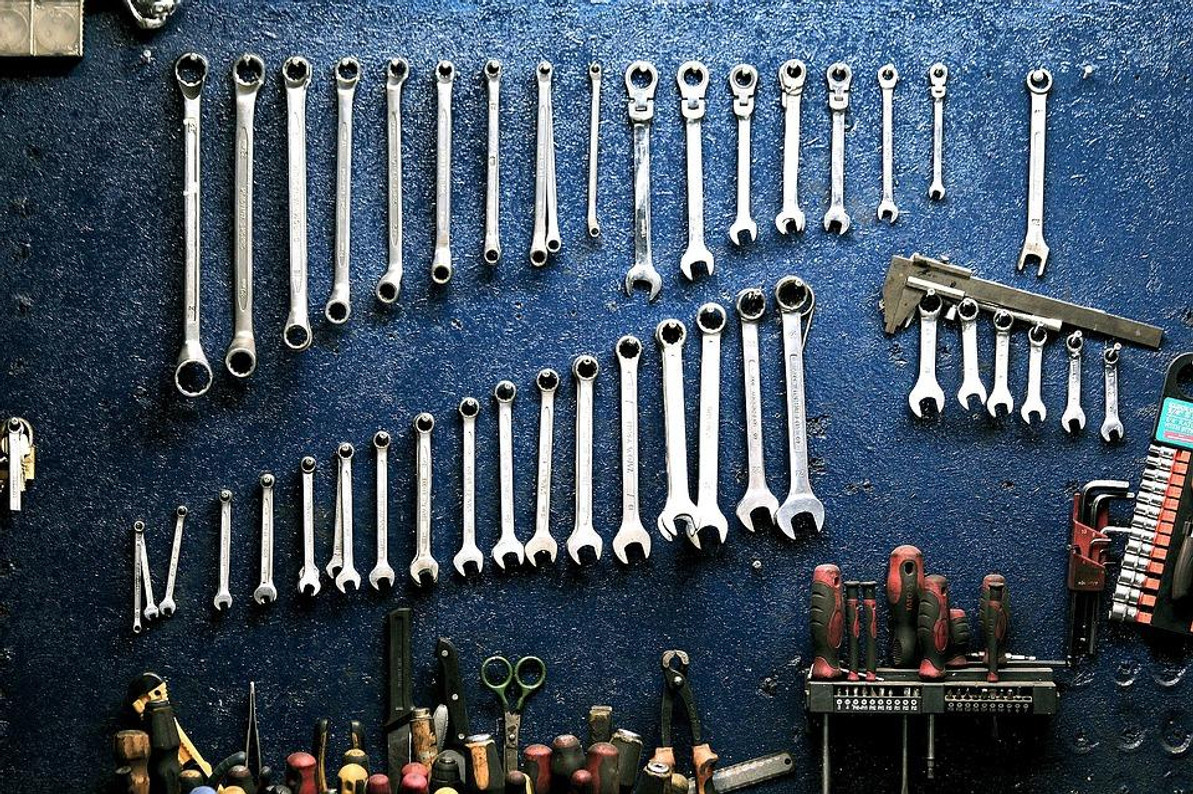Hand tools organisation in the work place
Tools that we use on a daily basis in the work place or in our homes and garages can create hazards if not properly used or placed correctly after usage; when adequate precautions are not taken.
In factories and industries, Personal protective equipment needs to be provided to the workers as they are always exposed to the hazards of splashing, falling, abrasive, and flying objects, or exposed to gases, vapors, mists, fumes, or dust while working with various power and hand tools. Also, workplaces need to ensure there are proper electrical connections. In those areas where temporary electrical connections are used, it is important to have a ground-fault circuit in place.
At home, which is usually termed as a DIY Segment (Do-It-Yourself ), the same precautions of a workplace can apply which an individual needs to take under consideration.
Employees need to be trained on various tools, including safety precautions and be made aware of various hazards they can cause when not used properly.
Here are some tips that will help prevent hazards while using tools:
- Proper and suitable tools have to be used for the job it is meant for
- All tools need to be maintained and kept in good condition
- Refer to manufacturer’s instructions for using tools
- Check tools before they are put to use and do not use the damaged ones which should be discarded
- Provide personal protective equipment and use them wisely
It is important that both employees and employers work together in promoting safety features at workplaces. A concerned person or department needs to be alerted immediately in case a hazardous situation is encountered.
The section below helps identify potential hazards power and hand tools can cause as well as different ways of preventing them.
Hand Tools - Hazards you need to be aware of
Tools that are manually powered are called hand tools. The hazards posed by these tools could be a result from improper maintenance and misuse. Wrenches and axes are some example of hand tools.
Possible hazards from hand tools could be:
- The possibility of wrench slipping may be there if the jaws of a wrench are sprung.
- If a tool’s wooden handle is cracked, splintered, or loose, then the head of the tool may fly off causing injury to other employees.
- The heads of impact tools that have mushroomed heads like drift pins, wedges, and chisels, may shatter upon high impact, causing fragmented pieces to fly off causing injuries to other employees or users.
- The tip of a chisel may fly or break off, if it used as a screwdriver, causing injuries to others.
In the workplace, It is the responsibility of the employer to ensure the equipment and tools are in usable conditions. The employers need to train employees on how to use various tools and handle them to ensure safety of everybody.
Scissors and knives have to be sharp when in use. More often than not, it is dull tools that cause more harm than the sharp ones. Also, while using sharp objects, like knives, saw blades, etc., employees need to direct to areas where there are no employees. Similarly, wrenches and iron or steel hand tools need to be used wisely.
Power Tools – Hazards you need to be aware of
Besides keeping the floors of workplaces clean, workers need to make use of gloves and safety goggles while working with power tools. Accidental slips of these tools can lead to hazards.
As power tools can be quite hazardous when not used properly, it is important that they are fitted with safety switches and guards, always. Depending on their power sources, power tools are classified as – power actuated, hydraulic, electric, liquid fuel, and pneumatic.
Workers need to take these precautions while working with power tools:
- Do not use the hose or cord for carrying a tool.
- Never place the hose or chord near sharp edges, oil, and heat.
- Keep the tools clean and sharp to ensure their best performance.
- Never resort to yanking if you want to disconnect the hose or chord from the receptacle.
- Always disconnect tools while you are charging them or cleaning them.
- Use a vise or clamps for securing work so that both the hands are available for operating the tool.
- Ensure all people are away from the work area, especially when they are not involved in the work.
- Accidental starting should be avoided.
- Make sure to maintain a good balance while operating a power tool.
- Avoid loose clothing, jewelry, and ties while operating machine tools as they can get caught in moving parts.
- Tag hand tools as ‘Do Not Use’ in case they are damaged or not fit to use.
- For changing accessories and lubricating, refer to the instructions provided in the tool manual.
Lastly, the most important aspect of using tools is maintenance and making sure they are put in the right place after use. Tools that are lying around can cause accidents and serious injuries to the workmen or personnel. Every hand tool or power tool should be put in its rightful place to extend the life of the tool resulting in savings in maintenance costs and replacement costs.
Recent Posts
-
Best Polishers/Buffers for Fleet & Facility Maintenance in Dubai
Keeping vehicles and buildings clean in Dubai is no small task. Sandstorms, dust, and heat make surf …15th Sep 2025 -
Best Wall Chasers for Dubai Contractors in 2025
Contractors in Dubai work with tough materials every day. Concrete walls, blockwork, and large proje …8th Sep 2025 -
What’s the Best Tape Measure for UAE Construction Sites?
On a busy jobsite in Dubai, tools get a real workout. Workers measure walls, steel bars, wood planks …22nd Aug 2025




